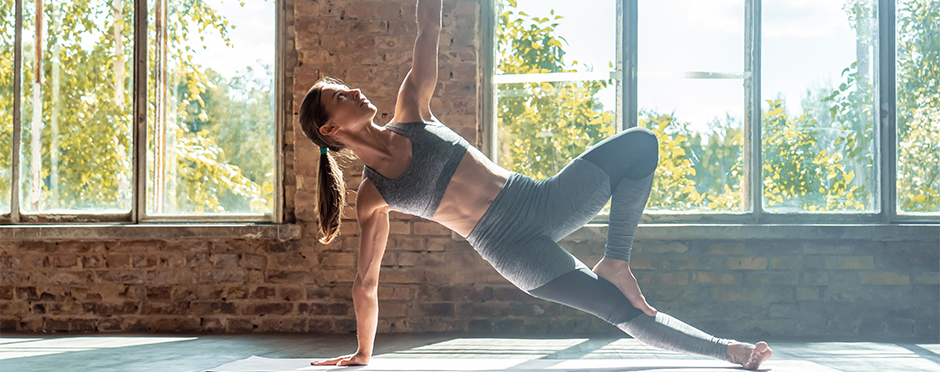
Active Recovery Tips for Gymnasts
Leave a CommentGymnasts participate in their sport all year round and multiple days per week. A gymnast performs multiple repetitions of skills and their routines on equipment such as uneven or high bar, beam, floor, vault, pommel horse, or rings within each training session. Due to the nature of their training schedule, gymnasts may not have time for full recovery between events or between training sessions. We know the benefits of rest days, but what about the benefits of active recovery? Active recovery can include recovery between events during one practice as well as recovery between practices.
What is Active Recovery?
Active recovery is a low-intensity exercise that you perform to improve recovery and performance after a high-intensity exercise. There are several benefits and types of active recovery. It is normal to have muscle soreness after high-intensity exercise that can last for several hours up to several days. Active recovery may help reduce this muscle soreness and fatigue. Active recovery should be low impact and low intensity. On the other hand, passive recovery is resting after an activity such as sitting, lying down, or sleeping.
Benefits of Active Recovery1:
- Reduces lactic acid buildup in muscles
- Increases blood flow to muscle tissue
- Removes metabolic waste from the muscles
- Reduces muscle tears
- Reduces muscle pain
Examples of Active Recovery for Gymnasts
Dynamic and Static Stretching
- Dynamic stretches are stretches where you are moving through a large range of motion. Dynamic stretches can be beneficial for active recovery between sets or events during practice or a meet. Examples of dynamic stretches for gymnasts:
- Lunge with a twist
- Jogging in place
- Tuck jumps
- Leg swings
- Arm circles
- Static stretching, on the other hand, is beneficial for improving flexibility. This is good after practice and can help with general soreness after high-intensity exercise. Examples of static stretches for gymnasts:
- Wrist flex/extension stretches
- Calf stretches
- Hamstring and hip stretches
- Low back stretches
Foam Rolling or Use of a Massage gun
Soft tissue work has been shown to help reduce muscle soreness, increase blood flow to muscles, and positively affect flexibility.2 You can learn more about massage guns here.
With their foam roller or massage gun, gymnasts should target muscles that they frequently use during their sport, including calves, hamstrings, quads, and lats.
Yoga
Yoga is a great active recovery option as it can help with flexibility and has mental health benefits. Yoga can help improve:
- Blood flow to muscles to help decrease soreness
- Flexibility
- Balance
Pilates
Pilates includes stretching and low-intensity strengthening and generally focuses on the core which is essential for gymnasts.
Cycling
Cycling is a low-impact exercise, and you can adjust the intensity level to make it low intensity for your active recovery day. Be sure not to overexert yourself.
Rest Days Can Help You Reach Peak Performance
Active recovery is a great option to help you manage your normal muscle symptoms after high-intensity workouts. Gymnasts should use these active recovery techniques after practices or when they are not training in the gym. Remember, rest days are okay and necessary, but even light stretching on these rest days can help you recover with less muscle soreness.
Our team is available to help gymnasts of all levels and abilities. If you are looking for more information on injury prevention or treating an injury, find an Athletico gymnastics program member near you today.
Find a Gymnastics Therapist Near You
The Athletico blog is an educational resource written by Athletico employees. Athletico bloggers are licensed professionals who abide by the code of ethics outlined by their respective professional associations. The content published in blog posts represents the opinion of the individual author based on their expertise and experience. The content provided in this blog is for informational purposes only, does not constitute medical advice and should not be relied on for making personal health decisions.
References:
1. Jemni, Monèm & Sands, William & Friemel, Françoise & Delamarche, Paul. (2003). Effect of Active and Passive Recovery on Blood Lactate and Performance During Simulated Competition in High Level Gymnasts. Canadian journal of applied physiology = Revue canadienne de physiologie appliquée. 28. 240-256. 10.1139/h03-019.
2. Kerautret Y, Di Rienzo F, Eyssautier C, Guillot A. Selective Effects of Manual Massage and Foam Rolling on Perceived Recovery and Performance: Current Knowledge and Future Directions Toward Robotic Massages. Front Physiol. 2020;11:598898. Published 2020 Dec 21. doi:10.3389/fphys.2020.598898
